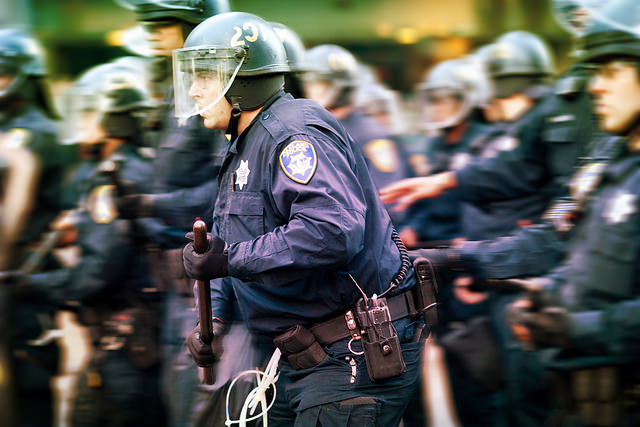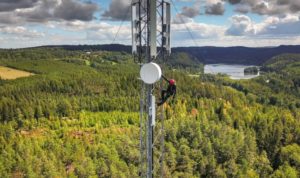
The Trump Administration’s ill-advised “law and order” approach to policing should be eschewed in favor of procedural justice.
The Trump Administration’s first official words on policing were posted on whitehouse.gov the day after Donald Trump was sworn in as President of the United States. In a statement entitled “Standing Up For Our Law Enforcement Community,” the Administration promised to end a “dangerous anti-police atmosphere in America” and to be a “law and order administration.” The Administration pledged “[m]ore law enforcement, more community engagement and more effective policing.”
Unfortunately, a “law and order” approach often is not consistent with the aims of community engagement and effective policing. On the campaign trail, for example, Trump often lauded the New York Police Department’s “Stop, Question and Frisk” program, arguing that “it worked incredibly well” as a means of reducing crime. But not only did a federal judge find the NYPD’s program unconstitutional; research shows that stop-and-frisk also undermines community engagement. In other words, stop-and-frisk is an ineffective and inefficient way to achieve its purported crime-control goals.
Indeed, several decades of scholarship teach us that strategies that encourage people to engage voluntarily and to cooperate with legal authorities are more effective than strategies that rely on achieving compliance through threat of force. Consent—not coercion—is the recipe for success.
When police officers treat people neutrally and with respect, are transparent about the reasons for their actions, and communicate trustworthy motives, they not only are more effective at controlling crime, but they also create a climate of reassurance that helps makes communities stronger socially and economically.
There is another shortcoming of the Trump Administration’s endorsement of aggressive policing tactics. Support for aggressive strategies disregards the fact that Americans do not just want to be protected from each other; they also want to be free from government-sponsored repression and violence. According to data compiled by the Washington Post, 963 individuals were killed by police officers in 2016. Some of those deaths—particularly those of unarmed black men—seriously damaged the legitimacy of police officers in the affected communities. This damage to public trust in police is harmful both to the achievement of crime-control goals and to public safety more expansively defined.
The link between the public’s trust in police and community safety is not merely anecdotal. Recent research by Matthew Desmond, Andrew Papachristos, and David Kirk demonstrates that high-profile incidents of police violence against unarmed black men have a dramatic effect on citizen crime reporting. In their study, Desmond, Papachristos, and Kirk found that after a highly publicized case of police violence against an unarmed black man in Milwaukee, residents of Milwaukee neighborhoods—especially those neighborhoods heavily populated by African Americans—placed significantly fewer 911 calls to report crimes. This effect lasted for over a year, resulting in a total net loss of approximately 22,200 calls for service—a severe cost to the goal of public safety.
Furthermore, research by Joscha Legewie shows that racial bias in police use of force is not static; it actually increases after salient events, such as the shooting of a police officer by a black suspect. Such events, Legewie explains, set off a chain reaction. They activate officers’ racial biases, increasing the likelihood that the officers perceive as threatening the actions of individuals of the stereotyped racial group. In an effort to mitigate these perceived threats, the officers retaliate against the purportedly offending racial group.
In other work, Legewie and Jeffrey Fagan argue that a more diverse police force, proportionally representing the population it serves, would serve to mitigate group threat and ultimately reduce officer-involved killings.
The new White House website proclaims that “it is the first duty of government to keep the innocent safe.” I find this statement misinformed and deeply ironic. Research demonstrates that offending is “normal,” especially among young people: the majority of Americans engage in legal violations or delinquent acts at some point during their lives. Although for many, such deviance is not criminalized, the behavior of youths of color often leads to their stigmatization and their being labeled as “offenders,” “criminals,” or “at-risk.” Moreover, research establishes that offenders often are victims themselves. But the Trump Administration’s rhetoric on whitehouse.gov suggests that this group would be morally disqualified from deserving government protection.
That said, I agree that a primary duty of government is to keep people safe and secure. In my own work, I have explained that public safety cannot be defined simply as crime reduction or maintenance of order. Safety and security entails freedom from personal victimization, community disenfranchisement, and government overreach.
How might law enforcement stand up for this vision, and how might we as individuals advocate for this type of law enforcement? We should reframe our goals, seeking not only the reduction of crime, but also an increase in the legitimacy of law enforcement and the entire criminal justice system in the eyes of those it serves. Police officers earn their legitimacy when they treat people with what we call procedural justice.
When people perceive the police as treating them fairly, and as having goals as values that are similar to their own, they are more likely to cooperate with the police to co-produce safety and order. Specifically, when police officers practice procedural justice, community members are more likely to report crimes, give information to the police, and serve as witnesses or jurors in court. When they receive procedural justice, members of the public are also more likely to shop locally, work in their communities, and cooperate with their neighbors to address social issues. It is this kind of policing—and this positive, fulsome vision of public safety—that I believe our nation wants and needs.
The Trump Administration’s “law and order” vision of America, as depicted on whitehouse.gov, is one in which we are “protected” by our own guns, bolstered by swarms of additional police officers who have been “empowered to do their jobs.” Putting aside the problem that increased individual gun ownership increases neither perceptions of safety nor actual safety, nothing in the website brief says what, precisely, the job of these specially empowered police officers would be.
My own job description for police officers would ask them to engage communities as co-producers of justice, through strategies aimed at building trust and legitimacy. This vision of policing would be the cornerstone of a new type of justice system—one that is focused on arresting the persistence of inequality and reducing the concentration of criminal justice exposure, which itself can become criminogenic. Put simply, we don’t need to move backward to old law-and-order approaches. We need to move justice forward.
This essay is part of a fifteen-part series, Regulating Police Use of Force.




